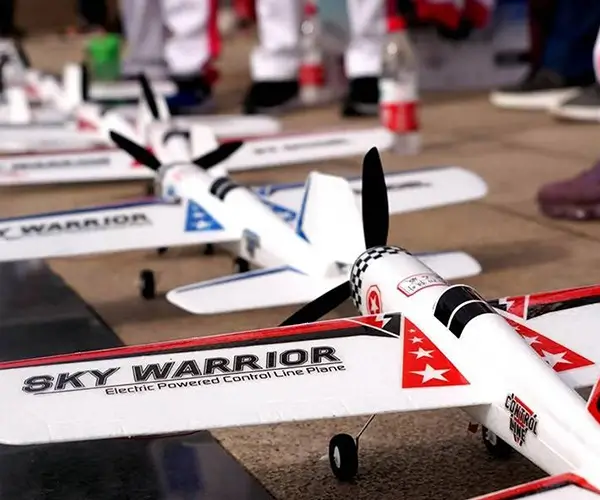part 1:
Bringing Motion to Life: A Friendly Guide to Arduino and Servo Motor Connections
Imagine transforming a simple circuit into a dancing robot or a precise robotic arm—sounds exciting, right? All of this becomes possible with one of the most versatile components in the maker’s toolkit: the servo motor. When paired with Arduino, a user-friendly microcontroller platform, servo motors open up a universe of creative projects and innovations.

Understanding the Basics: What Is a Servo Motor?
Before diving into the wiring and coding, it’s worth understanding what a servo motor does. Unlike regular motors that run continuously, a servo motor is designed to rotate to a specific position within its range, which is typically less than 360 degrees. It’s equipped with a built-in feedback mechanism that reports the current position, allowing for precise control over movement.
Servo motors are commonly used in robotics, RC vehicles, automation, and even art installations. They come in various sizes and torque capabilities, making them adaptable to different projects. The miniature servo, hobby servo, or standard servo—each type serves particular needs but generally connects in a similar manner.
Getting Ready: What You Need to Connect a Servo to Arduino
To embark on your servo control journey, gather the essential components:
Arduino board (Uno, Mega, Nano, etc.) Servo motor (common models include SG90, MG995, or compatible high-torque servos) Jumper wires (male-to-male typically) Power supply (depending on the servo’s power needs, sometimes a separate power source is recommended) Breadboard (optional, but helpful for prototyping) Resistors and capacitors (if needed for filtering or voltage regulation)
Once your toolkit is ready, it’s time to focus on the connection techniques.
The Standard Connection: Pinouts and Wiring
Most hobby servo motors have three wires:
Red: Power (Vcc, usually 5V) Black or Brown: Ground (GND) Yellow, White, or Orange: Control Signal (PWM, Pulse Width Modulation)
In a typical setup:
Connect the servo’s red wire to the Arduino’s 5V pin. Connect the black or brown wire to the GND pin on Arduino. Connect the control wire to one of Arduino’s digital PWM pins (like pin 9 or 10).
Important Tips During Connection
Confirm your servo’s voltage and current ratings. Many small servos run fine directly from the Arduino 5V line, but larger servos might require an external power supply. Use a common ground between your Arduino and external power supply if applicable. Keep the control wire connected to a PWM-capable digital pin for precise control.
Powering Your Servo: Proceed with Caution
Servos can draw significantly more current than the Arduino can supply through its onboard power lines, especially when under load. Relying solely on the Arduino’s 5V pin might cause voltage drops or resets, which can crash your program or damage your board.
To avoid issues:
Use an external power supply rated for your servo’s current needs (often 4.8V to 6V). Connect the external ground to the Arduino ground to establish a common reference point. Avoid powering multiple servos from a single source unless it’s adequately rated.
Test Your Connection: The Simple Sketch
Once everything is wired, loading a test sketch makes sure your servo responds correctly. The classic example is the sweep code:
#include Servo myServo; void setup() { myServo.attach(9); // Attach servo to pin 9 } void loop() { for (int pos = 0; pos <= 180; pos += 1) { myServo.write(pos); // tell servo to go to position in variable 'pos' delay(15); // waits 15ms for the servo to reach the position } for (int pos = 180; pos >= 0; pos -= 1) { myServo.write(pos); delay(15); } }
Upload the sketch, watch your servo oscillate smoothly, and—you’re on your way! This simple step confirms your connection is correct.
Troubleshooting Common Issues
Servo jittering or not moving at all: Double-check wiring, especially the control wire connection and power supply. Confirm the code’s pin matches your connection. Overheated servo: It’s a sign it’s overworked or powered by an insufficient source—try an external power supply. No response: Verify your Arduino’s port and board type, and ensure the library is correctly included.
Advancing Your Projects: Beyond Basic Connections
Once your servo is responsive, you can explore more complex control mechanisms like:
Using sensors (ultrasound, IR, gyroscope) to automate movements. Incorporating multiple servos for robotic arms. Using PWM signals for advanced speed and position control.
The key is experimentation. Connect—program—tweak—and watch your robot come alive. But remember, a good connection is the foundation—sturdy, secure, and well-understood.
Ready to dive further? Next time, we’ll explore how to control multiple servos simultaneously, get creative with sensors, and even integrate your servo systems into intricate robotic projects. The possibilities are practically endless once you master the basics of Arduino servo motor connection.
Stay tuned for part 2, where everything from multiple servo coordination to real-world project ideas unfolds to expand your maker horizons.
Kpower has delivered professional drive system solutions to over 500 enterprise clients globally with products covering various fields such as Smart Home Systems, Automatic Electronics, Robotics, Precision Agriculture, Drones, and Industrial Automation.




































